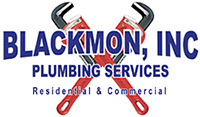How to Detect and Repair Water Line Breaks in Your Plumbing System
Water line breaks within a home’s plumbing system can lead to significant issues, ranging from water damage and high utility bills to potential health hazards. Detecting and addressing these breaks promptly is crucial for maintaining the integrity of your home’s infrastructure. This article explores effective strategies for identifying water line breaks and the best practices for repair, emphasizing the importance of professional involvement in ensuring a lasting solution.

Identifying the Signs of a Water Line Break
Unexplained Increase in Water Bills: A sudden spike in your water bill without a corresponding increase in usage is often the first indicator of a leak or break in your water line.
Reduced Water Pressure: If you notice a significant drop in water pressure throughout your home, it could signify a breach in your main water line.
Wet Spots or Puddles: Unexplained wet spots in your yard or the sound of running water when all taps are off can indicate a water line break.
Water Discoloration: Any discoloration of your water might suggest that a break has allowed contaminants to enter your supply.
Steps for Detecting Water Line Breaks
Visual Inspection: Regularly inspect your property for signs of leaks, including damp patches on walls, floors, and ceilings, or unexplained puddling in your yard.
Monitoring Water Usage: Keep an eye on your water meter. A good method is to take a reading, not use any water for a couple of hours, and check the meter again. If it has changed, you likely have a leak.
Listening for Leaks: During quiet times, listen for the sound of running water in walls or under floors, indicating a possible break.
Professional Diagnostic Tools
Advanced technologies, such as acoustic leak detection devices and thermal imaging cameras, enable professionals to locate water line breaks with precision, minimizing the need for invasive exploratory measures.
Approaches to Water Line Repair
DIY Repairs: For minor leaks or visible damage to accessible pipes, handy homeowners may consider DIY repairs. This could involve tightening connections, applying waterproof tape, or replacing short sections of pipe. However, the complexity of most water line issues usually demands professional intervention.
Professional Repairs: Professionals have access to a range of repair methods suited to the severity and location of the break:
- Spot Repair: For localized damage, a spot repair on the affected section can be a cost-effective solution.
- Pipe Sleeving: Inserting a smaller pipe or sleeve inside the damaged pipe can seal leaks and reinforce the structure.
- Pipe Bursting: For severe cases, this method involves breaking apart the old pipe while simultaneously pulling through a new one.
- Trenchless Repair: This modern technique allows for the repair or replacement of water lines without extensive digging, preserving your landscape and reducing repair time.
Preventative Measures
Maintaining your plumbing system can prevent future water line breaks. Regular inspections, insulating pipes to protect against freezing, reducing water pressure if it’s consistently too high, and promptly addressing minor leaks can all contribute to the longevity of your water lines.
The Role of Professionals in Water Line Repair
Given the complexities involved in diagnosing and repairing water line breaks, enlisting the services of a professional plumber is often the most prudent approach. Professionals not only bring their expertise and specialized tools to the task but also ensure that repairs meet local codes and standards, providing homeowners with peace of mind and protection against future issues.
Detecting and repairing water line breaks in your plumbing system is critical for maintaining a safe, efficient home environment. While some signs of damage can be observed without professional help, the diagnosis and repair of most water line issues require the precision and expertise of skilled plumbers. Investing in professional water line repair services can save homeowners time, money, and the inconvenience of addressing the fallout from undetected leaks or inadequate repairs.
Homeowner’s Toolkit: DIY Methods for Simple Water Line Repairs
For the intrepid homeowner, certain water line issues can be tackled with a well-stocked toolkit and a dose of DIY spirit. Simple repairs such as tightening loose fittings, replacing worn washers, or applying waterproof tape to small leaks are within the realm of possibility for those handy around the house. Equipping yourself with basic plumbing tools and gaining knowledge through reliable tutorials can empower you to address minor issues promptly, preventing further damage. However, it’s crucial to know your limits—recognizing when a problem is beyond your skill level is essential for avoiding costly mistakes and ensuring the safety and integrity of your plumbing system.
The Professional Touch: Ensuring Water Line Repair Success
When water line repairs transcend the scope of DIY fixes, calling in the professionals is not just an option—it’s a necessity. Professional plumbers bring an arsenal of advanced tools, extensive training, and a wealth of experience to every repair job. Whether it’s employing trenchless repair techniques for minimal disruption or navigating the intricacies of your home’s plumbing architecture, a professional’s touch ensures that repairs are thorough, compliant with codes, and designed to last. Investing in expert water line repair services offers homeowners peace of mind, knowing that their plumbing system is in capable hands, safeguarded against future issues.
